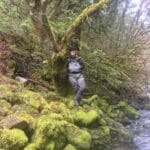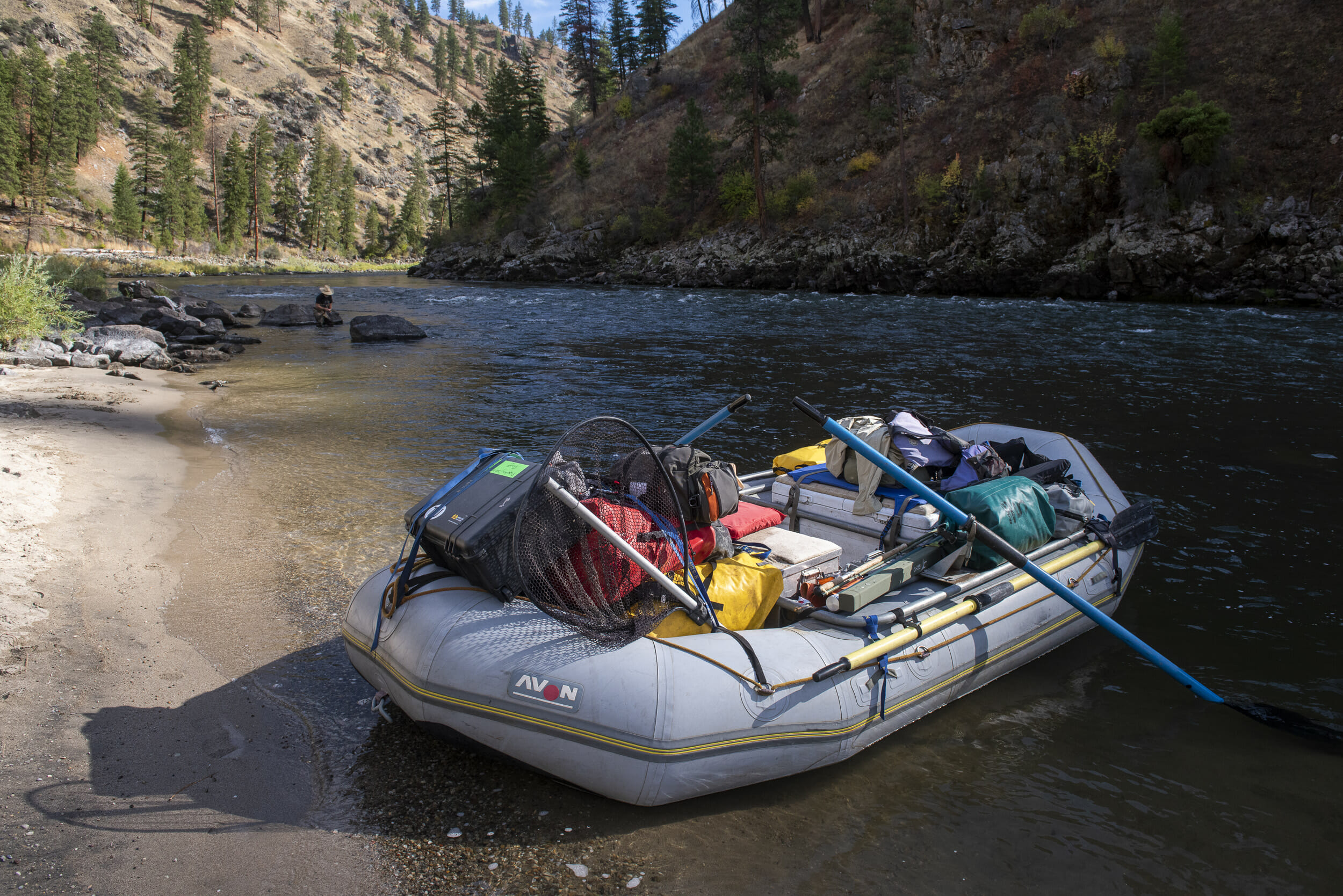As the trees from the trail opened to a view of the water, I checked out the anglers already standing in the river.
Against all common sense, I immediately assumed they knew more than me. I assumed they were slightly annoyed that I had come to crowd their spot.
As I walked upstream to avoid getting too close, I peeked at their gear. Little by little, self-doubt replaced whatever confidence I had built up on the drive over. Had I brought the right flies? Could I cast far enough? Was it nerdy to wear this jacket and bring this net?
By the time I made it to a spot, I threw a few half-hearted casts, looked around uncomfortably, changed my fly, and decided today might just not be the day for me. I’d come back later with someone who knows what they’re doing.
Like everyone, I wear many hats. I am a white woman. I have name-brand fishing gear, my own car, and two capable legs to bring me here. I was aware of each of my “hats” that day, some of which made it easier for me to be there.
And yet, fishing — the meditative, beautiful, reflective, exciting pursuit — scared me. The beautiful set in which this scene played out was exactly the place I wanted to rest for the day, but still, deflated, I left.
Driving home that day, and in the months of reading personal stories from others with their own hats since, I can only imagine how much harder this would have been if the people on the river hadn’t all looked like me.
Those already fishing that day were all white. None of them, nor I, used a wheelchair or had old gear — or no gear. What if I’d had to take public transit or hitch-hike to get there? Would I still have gone? What if someone had made an unwelcoming comment to me? I might never go back.
There are numerous stories from would-be anglers to whom this, and much worse, has happened because of those barriers. Identity based barriers to our public lands exist for many people — gender-based safety concerns, racism, physical access and more — deter many people from accessing public lands.
Decisions are being made today that dictate the future of America’s public lands. The lands that, in theory, we can all venture to for a day off. The places we can catch our breath, explore and maybe release a fish or two or fill our freezer. The places we go to get away from the hustle and bustle. The places that provide drinking water. The places we went with our grandparents or might want to take our kids one day.
But if public lands are to be conserved in the way they deserve; they need to be loved and valued widely. They need to be places where our best memories happen, not scary or negative ones.
Someone who doesn’t feel welcome or safe, or who can’t even get there in the first place, cannot know the love that some of us feel innately for our public lands. I believe we can change that.
These days, I watch out for folks on the river. I make conversation — probably more than is cool. I smile. I move over.
Trout Unlimited staff started a gear swap so that the stuff we need is one less barrier in sharing the love of the public lands that fill us up. There’s more to do to make our public spaces welcoming and accessible, but this is a start.
If you have gear collecting dust, will you post it so someone else might use it? Maybe it’ll make that joy in releasing a beautiful brookie or summiting the foothills and watching the sunset possible for that person. What a gift.
If we are to effectively conserve natural places, we need everyone. Being outside makes my life richer, and I want everyone to know that joy — or at least taste it the way I have and see if they like it. We can’t take off our hats, but we can certainly impact others’ experiences for better or for worse.
Let’s make TU the place where people open the doors the widest.
Check out the gear swap here, and join the conversation about America’s public lands. Here’s a good place to start.



